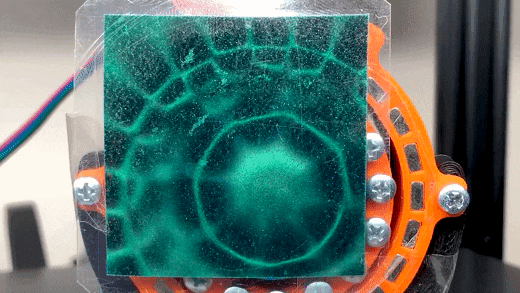Today is Saturday, 24 of September, 18:41 Brasilia Timezone
I already have another project on hold because I couldn't afford it, not I'm literally making another project purely on impulse. I'm not just dumdum, I'm completely smooth brain.
Spoiler: this is a bad idea.
Again, I don't know anything about Virtual Reality Software and Hardware, and again I'm jumping on this project completely blind and completely stoopid.
I had this idea a long time ago. I tried to make a gofundme so I could pay an engineer to make a glove for me, but no one gave a damn about the idea. Maybe that's a signal that I shouldn't be pursuing this idea...
What is "Piezoelectric"?
Well, if you just got into this project and is kinda lost on what the heck all those buzzwords mean, worry not, I will try to explain at the best of my abilities. Meaning: I'm going to let some videos on the subject to explain for me. lol
In summary, piezoelectrics are coin-like crystals that vibrate when you pass a current through them, and the reverse is also applicable: if you vibrate/impact/press it, it will generate a electrical current. All of this in a single device.
You can use this to either make a movement generator, or use these electrical currents to stipulate an amount of force.
So if you move a leg to walk, but your leg is held in place by something (like an armature with piezo-sensors), you will just apply a pressure on the piezoeletric crystals; which, in turn, will create a certain amount of current, and thus, can be translated as a movement inside a virtual world.
Let's say, your leg movement for walk generates 0.5 volts (it is a random number) when it applies pressure on the piezoelectric sensor, the computer can define that this 0.5 volts is a X value of centimetres that your leg will move.
What are "Haptics"?
It is just tactile sensation, you can use the vibration to simulate the sensation of touch. Thus, haptical feedback. I doubt I will be able to simulate the sensation of cold and heat, but these can be arranged with the equally cheap (for north-americans) Peltier Thermoelectric Cooling Tablets used on computer cooling.
Piezoelectrics are quite a versatile things for this, you can literally take a piezoelectric and depending on the vibration, you could simulate texture. In the video below, it is shown a product where some people used ultrasonic piezoelectric devices to simulate the sense of touch in middle air.
Obviously, the version they used is much more potent than these cheap piezo ones, but since they will be practically touching your skin, I don't see why it wouldn't be able to do the same.
Why a full-body rigid suit?
Because I believe it will be easier and cheaper to construct something without moving parts, and it will be less physically intense to use such device; instead of awkward buttons on VR controllers, you will just feel everything on your skin, naturally interacting with it.
Also, I say "rigid suit", but it will basically be a glorified armchair with a cover. And since this thing is completely DIY from scratch, it will probably look like scrap clumped together.

Also, the biggest reasons are safety and complexity.
If you made a full body VR suit using actuators (hydraulic, electric, pneumatic etc.), you would have to deal with two major factors: the movements of the user, and the movements the virtual ambient would employ in the user.
A human being can easily exceed 80kg (176,37lbs) depending on a lot of factors, now imagine a machine built to sustain its weight, the force of the movements and the force it needs to carefully apply to the user limbs in other to simulate what it is happening inside the game?
By the way, the lower part of the human body (thighs, legs and feet) has 3 times the strength necessary to lift the entire body weight. That's why you can still walk and run carrying weight.
Below is the image of the "Holotron", a VR exosuit:

Needless to say, but this is just a 3D model image.
This is the most advanced result:

Just look the amount of cables and actuators. If one of them starts going "rogue" and applying too much force, you can seriously injury someone.
A "funny" way of thinking about that is just thinking about the Huey Emmerich t*rture scene in Metal Gear 5, where they hack his exoskeleton and start to revert the knee actuator.
If a piezoelectric starts to acting fuzzy? Maybe a weird vibration on your butt cheeks.
Needless to say, it will be easier to make a piezoelectric suit at home than those exoskeletons.
Okay, maybe if you used friction gears (wheels of rubber moving each other) or magnetic gears it could be safer, since skipping gears wouldn't break the entire mechanism (or your body).
But my head starts iching just thinking on how to strike a balance between movement speed and force with electric motors that aren't too bulky, expensive and doesn't break VR immersion.

I don't know about friction gears, but magnetic gears are known to have too little torque (rotational force).
Now, the hauting question:
If piezoelectrics are so cheap and easy to handle, then why no company started to build piezoelectric suits?
I have absolutely no fricking idea, but it seems like I will have to f*ck around and find out.
Discussions
Become a Hackaday.io Member
Create an account to leave a comment. Already have an account? Log In.